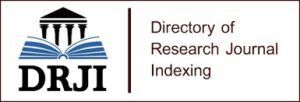Temporal Dynamics of Pyrethroid and Neonicotinoid Residues in Maize (Zea mays): Implications of Environmental Factors and Bioremediation Strategies
This study investigates the dynamics of pesticide residues in maize cultivation, focusing on the temporal patterns of pyrethroids and neonicotinoids, their environmental influences, and the efficacy of bioremediation in Dera Ghazi Khan, Pakistan. Pesticide residues, including Cypermethrin, Lambda-cyhalothrin, Imidacloprid, and Thiamethoxam, were monitored throughout the growing season, revealing peak concentrations during mid-growth stages. The degradation of these pesticides was significantly influenced by temperature, soil moisture, and microbial activity, with pyrethroids degrading faster than neonicotinoids. The study also documented a decline in soil microbial diversity and activity, particularly in treated plots, indicating the negative impact of pesticide residues on soil health. Bioremediation trials using microbial consortia and organic amendments successfully reduced pesticide residues and partially restored microbial health, demonstrating a viable approach to mitigating pesticide contamination. These findings underscore the need for optimized pesticide application practices, integrated pest management strategies, and stringent regulatory measures to safeguard food safety and environmental health. The study concludes with recommendations for future research to explore sustainable agricultural practices and the potential of biopesticides in reducing chemical pesticide dependency.
Keywords: Pesticide residues, maize cultivation, bioremediation, soil health, integrated pest management




















